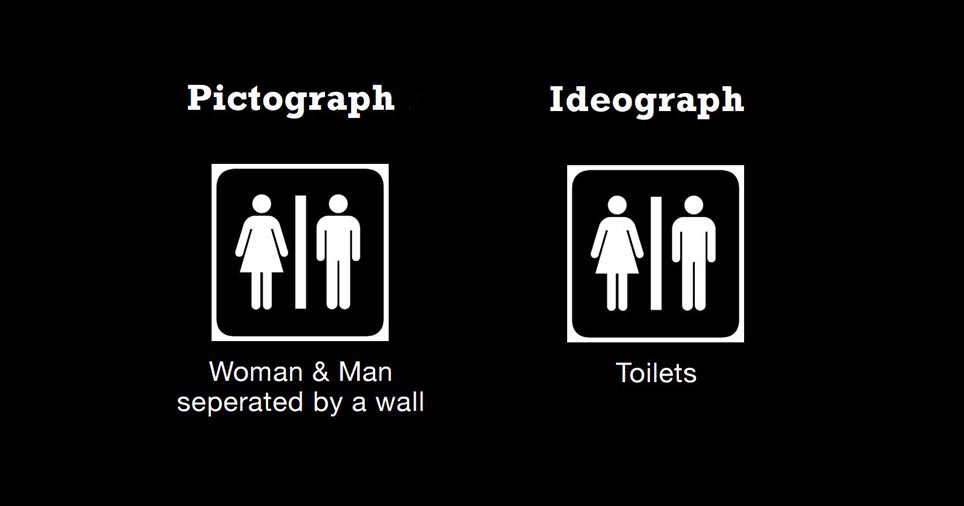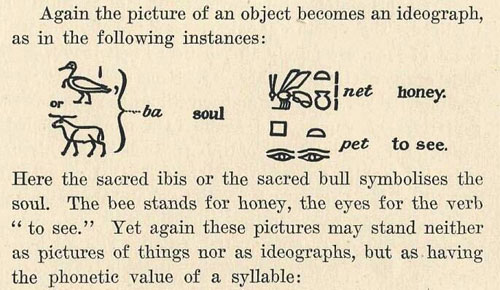That said, as I try to reconcile the information from the classes yesterday, I’m reminded of how amazing people are. Consider how mankind has managed to transmit knowledge learnt from generation to generation. It’s why we have cars today, because our ancestors made tools that have been handed down and developed over time! During History of Graphic Design (DV2003) taught by Astrid Kensinger (who is also teaching Typography I), she spoke of the start of graphic design in pictographs and ideographs, both symbols to represent objects/things and ideas/concepts respectively. Evidently, this was a huuuge leap in thought for mankind.
In the beginning, people carved past events, their hunting expeditions, tales of epic hunts on walls. It was a narrative of sorts, of someone and something. One can understand from the art on the wall that a “gigantic bear attacks hunters”.
Then, it became more stylised. We might start getting symbols for hand, paw, teeth. So the action can be conveyed in writing as “gigantic bear attacked hunter with paw and teeth”. More specificity can be expressed through these simpler symbols. Ideographs, symbols that convey concepts and ideas further enrich the written language. So we can express “gigantic bear attacked hunters unexpectedly”. Intangible things like emotions can also be expressed, such as “hunters were surprised, raised spears and fought”. Chronology, past, present and future ideas might also be expressed! Symbols might even be put together to form a new meaning! Like 木, 林, and 森; wood/tree to forest.
Please note that I am not expert in the development of these things, okay! The above is how I understand petroglyphs, pictographs and ideographs. In fact, the written word could be far more complex and elaborate, like the Cuneiform below:

Astrid mentioned that people who could read and write such as scribes, were the elite, and considered magicians of some sort. Being literate was power. Well, given how complicated their writing system is, it’s understandable.
Oh! Here’s a really helpful presentation online that distinguishes pictographs from ideographs. (It’s where the featured image is from)
I think this really ties into HG1001 Mind and Meaning, because how do we look at words, read them, and actually understand what it means? The word is merely the vehicle through which we understand an idea, which is why “happy” can be expressed as 开心, 楽しい, onnellinen, ευτυχισμένος, سعيد. (Google translate was used for quite a number of the above translations: Chinese, Japanese, Finnish, Greek and Arabic), which (I assume) means about the same thing, just in different languages. Fascinating!
That’s about it for now. Class will start soon.
さようなら!
A few more cool ideographs from the Internet:





